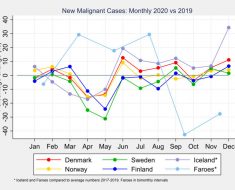The Interactive Talk presentation, "Predicting Oral Cancer Risk using Machine Learning", will take place on Saturday, June 25th, 2022 at 2 p.m. China Standard Time (UTC+08:00) during the "e-Oral Health Network I" session. The study, undertaken by John Adeoye of the University of Hong Kong, SAR China, aims to develop a machine learning-based platform to predict the risk of oral cancer and oral potentially malignant disorders (OPMDs).
Visual oral examination (VOE) was performed among 1467 participants of a community-based screening program by three calibrated dentists prospectively. Each individual's status was defined as positive/negative for oral cancer/OPMDs and histologic confirmation of epithelial dysplasia (ED) and squamous cell carcinoma (SCC) was performed for positive status.
Follow-up status of those that screened negative was monitored via state-linked electronic health records. Information on demography, habitual, lifestyle and familial risk factors was obtained, and expired carbon monoxide levels (in ppm) were assessed using a monitor. Input features (n=40) and histologic diagnoses were used to populate 12 machine learning algorithms with 80:20 train-test splitting applied to the data randomly during development.
Recursive feature elimination with 10-fold cross-validation was used for feature selection while synthetic-minority-oversampling-technique with edited-nearest-neighbors was implemented for class imbalance correction. Internal validation was conducted with the unused 20% data with the comparison of outputs using McNemar's test used for optimal model selection Performance metrics included recall, specificity, and F1-score.
The study demonstrated that machine learning is a successful tool for predicting oral cancer risk and may be applied to identify 'at-risk populations' in opportunistic and organized screening.
International & American Associations for Dental Research
Posted in: Device / Technology News | Medical Condition News
Tags: Cancer, Carbon Monoxide, Carcinoma, Cell, Craniofacial, Dysplasia, Machine Learning, Malignant, Oral Cancer, Research, Squamous Cell Carcinoma
Source: Read Full Article





